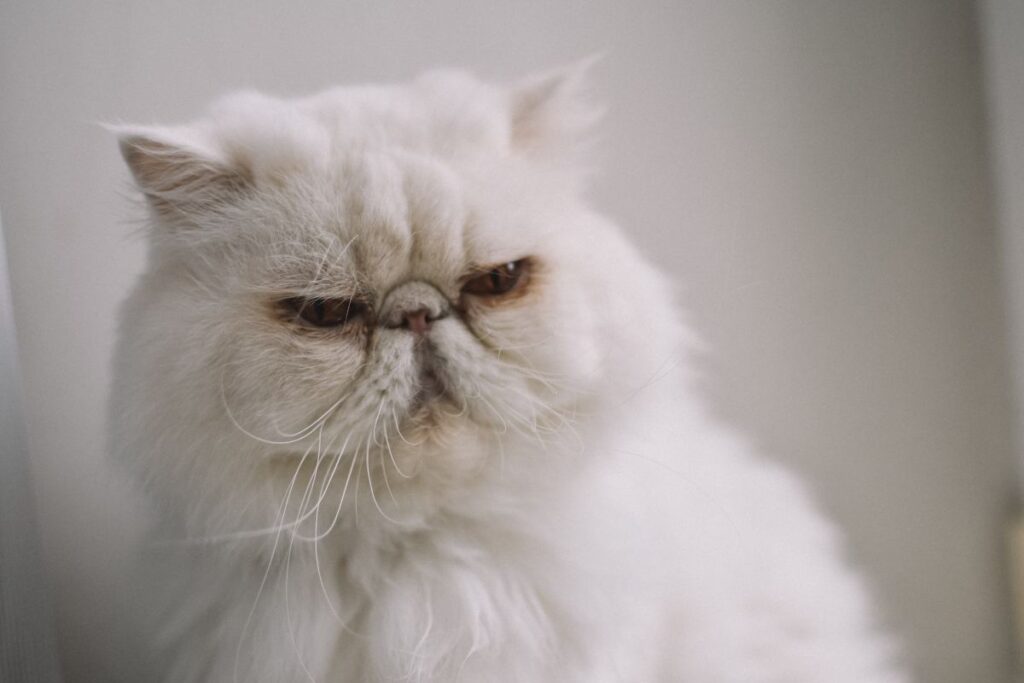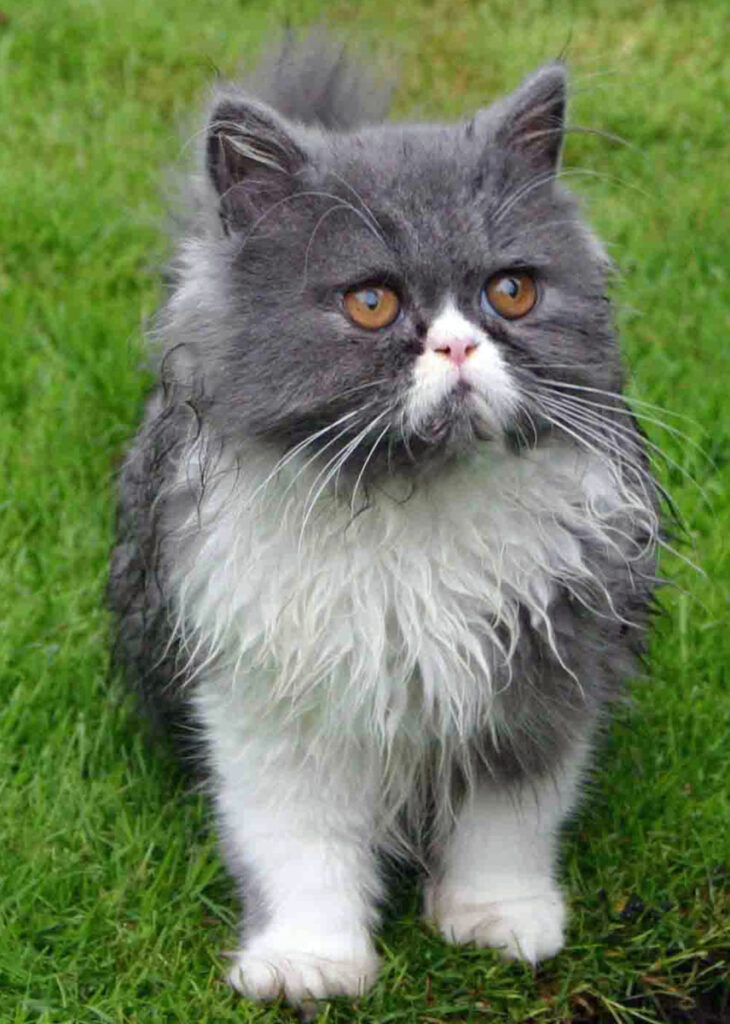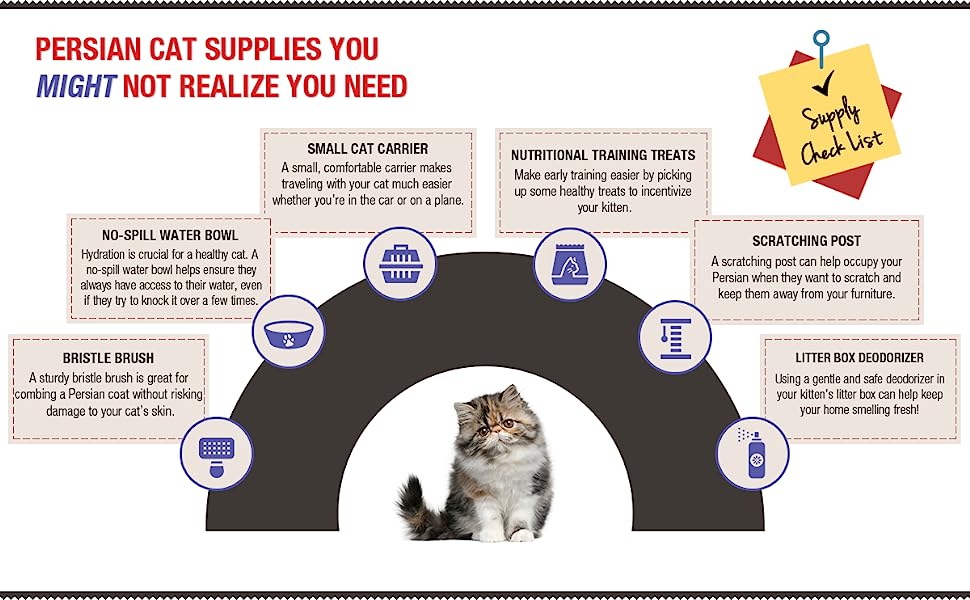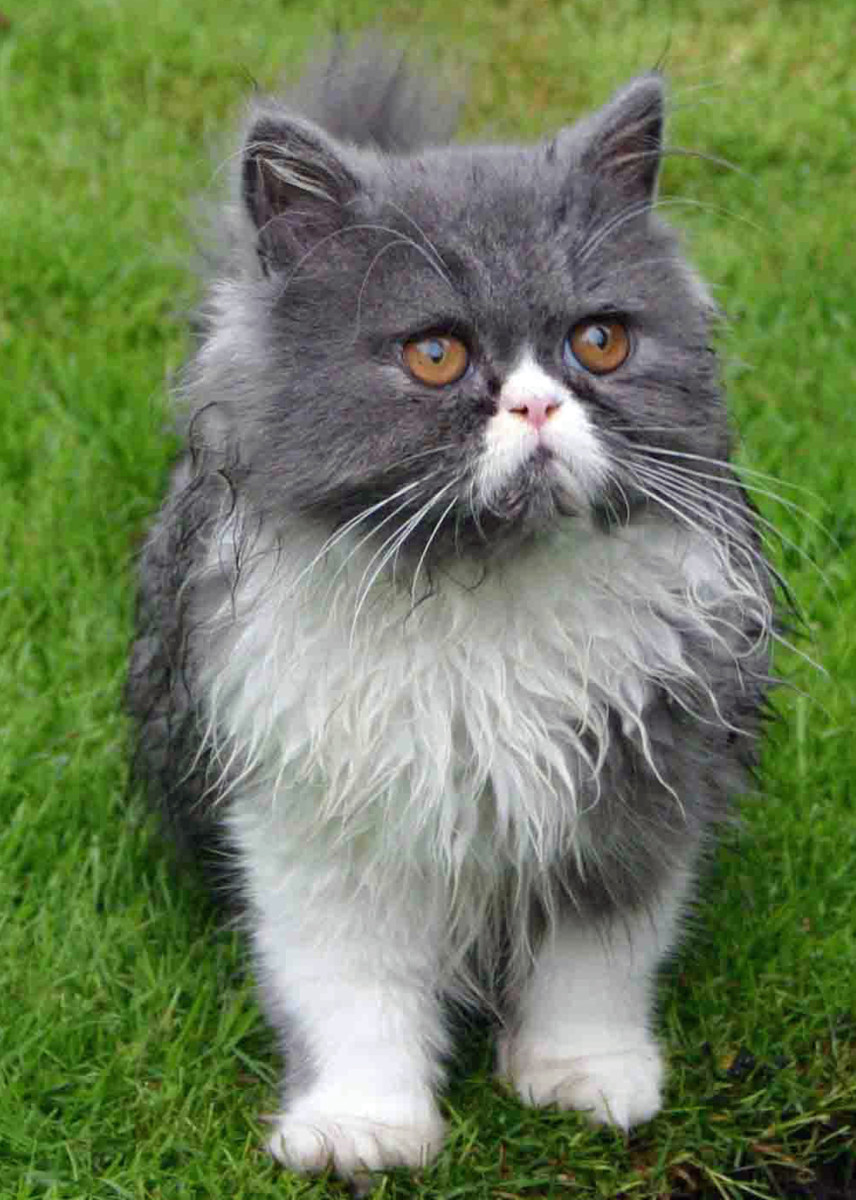Are you considering getting a Persian cat as a pet? Well, you’re in luck because I have some great content tips for choosing the perfect Persian cat for you! In my blog, “http://persiancatdude.com,” I aim to provide you with comprehensive and engaging information about Persian cats. Whether you’re a first-time owner or a seasoned cat lover, you’ll find valuable insights on various aspects of owning and caring for this breed.
In my upcoming posts, I’ll delve into the different factors you should consider when choosing a Persian cat. We’ll discuss topics such as temperament, grooming needs, and health considerations. I want to ensure that you have all the reliable information you need to make an informed decision. Moreover, I’ll include 10 question and answer sets at the end of each post, addressing common queries that people have about Persian cats. This way, not only will you gain knowledge about these magnificent felines, but you’ll also have all your burning questions answered. So, stay tuned for a wealth of information that will help you choose the perfect Persian cat for you!
Tips for Choosing the Perfect Persian Cat
If you’re considering adding a Persian cat to your family, you’ve made a fantastic choice! Persian cats are beloved for their luxurious coats, unique facial structure, and calm temperament. However, choosing the perfect Persian cat requires careful consideration and preparation. In this article, we’ll provide you with valuable tips to help you make the best decision and find your ideal feline companion.

The Origins of Persian Cats
The history of Persian cats dates back centuries, originating in Persia (modern-day Iran). These cats were highly cherished for their beautiful coats and were even owned by royalty. Through the centuries, they spread to other regions of the world, captivating people with their distinct features and gentle personalities.
Historical Significance of Persian Cats
Persian cats have a rich historical significance. In ancient Persia, these cats were considered symbols of luxury and prosperity. They were treasured companions of nobles and aristocrats. Their popularity continued to grow, and they soon became highly sought-after pets worldwide.
Evolution of the Persian Cat Breed
Over time, selective breeding has refined the Persian cat breed, leading to the variety of traits that we see today. Breeders have focused on enhancing the distinct features of Persian cats, such as their long, flowing coats and round, expressive eyes. This evolution has resulted in Persian cats being one of the most recognizable and beloved breeds in the world.
Physical Characteristics of Persian Cats
Persian cats are known for their distinctive features, which set them apart from other breeds. Their most prominent characteristic is their long, voluminous coat, which requires regular grooming to maintain its beauty. Persian cats also have a unique facial structure, with a flat face, rounded head, and small, upturned nose.
Variations in Coat Colors and Patterns
Persian cats come in a wide range of coat colors and patterns, making each cat unique. Common coat colors include solid white, cream, black, blue, and red. Additionally, Persian cats can have various coat patterns, such as tortoiseshell, tabby, and bi-color. Whether you prefer a classic white Persian or a multi-colored furball, you’ll find a Persian cat that fits your preferences.
Unique Facial Structure of Persian Cats
The facial structure of Persian cats is one of their defining features. Their flat face, sometimes referred to as “brachycephalic,” gives them a distinct appearance. Persian cats have large, round eyes that are typically copper or blue in color. Their delicate nose and small ears contribute to their overall sweet and endearing expression.

Common Health Issues in Persian Cats
While Persian cats are generally healthy pets, they are prone to certain health issues. Some common health problems include brachycephalic airway syndrome, eye problems (such as tearing and ulcers), and dental issues. It’s essential to be aware of these potential health concerns and provide your Persian cat with regular veterinary care to ensure their overall well-being.
Grooming Needs of Persian Cats
Persian cats have high grooming needs due to their long and dense coats. Daily brushing is necessary to prevent matting and keep their fur looking beautiful. Regular bathing is also recommended to maintain cleanliness. Additionally, proper eye and ear cleaning should be part of their grooming routine. If you’re considering a Persian cat, be prepared to devote time and effort to their grooming needs.
Diet and Nutrition for Persian Cats
Providing a balanced diet is crucial for the health of your Persian cat. Choose premium-quality cat food that is specifically formulated for long-haired breeds. Persian cats may require a diet rich in essential fatty acids to support their skin and coat health. Consult with your veterinarian to determine the best diet and feeding schedule for your Persian cat.
Finding a Reputable Breeder
When choosing a Persian cat, it is essential to find a reputable breeder. A reputable breeder will prioritize the health and well-being of their cats, ensuring that they are bred responsibly and ethically. They will also provide you with necessary documentation, such as health records and pedigree information. Research local breeders, visit their facilities, and ask for references to ensure you’re working with a trustworthy source.
Considerations for Adopting a Persian Cat
Adopting a Persian cat can be a fulfilling experience, as you are giving a deserving cat a loving home. Consider reaching out to local animal shelters or rescue organizations that may have Persian cats available for adoption. Picking a rescue cat allows you to provide a second chance for a cat in need and can be a rewarding choice for both you and the cat.
Interacting with a Persian Cat Before Making a Decision
Before making a final decision, it’s important to interact with the Persian cat you’re considering. Spend time getting to know the cat’s temperament, energy level, and personality. Each Persian cat has its own unique traits, and it’s essential to find a cat whose personality aligns with your lifestyle and preferences.

Temperament and Personality Traits of Persian Cats
Persian cats are known for their calm and gentle nature. They are typically laid-back and enjoy a comfortable and serene environment. Persian cats are not the most active breed, preferring cozy cuddles and quiet playtimes. They make excellent companions for individuals or families looking for a peaceful and low-key pet.
Training Tips for Persian Cats
Persian cats are intelligent and can be trained with patience and positive reinforcement. Start training early and use treats or praise as rewards. Teaching them basic commands, such as “sit” and “come,” can be useful for their safety and your peace of mind.
Creating a Safe and Stimulating Environment for Persian Cats
It’s crucial to create a safe and stimulating environment for your Persian cat. Persian cats enjoy having access to cozy beds, scratching posts, and interactive toys. Provide them with vertical space, such as tall cat trees or shelves, so they can observe their surroundings and feel secure. Regular play sessions and interactive playtime are essential to keep them mentally and physically stimulated.
The World of Cat Shows and Competitions
If you’re interested in showcasing your Persian cat’s beauty and unique qualities, you may consider participating in cat shows and competitions. Cat shows provide a platform for breeders and owners to display their cats and compete for titles and recognition. These events can be both rewarding and exciting for cat enthusiasts.
Preparing a Persian Cat for a Show
Preparing a Persian cat for a show requires careful grooming and preparation. Start by ensuring the cat’s coat is in impeccable condition, with no matting or tangles. Regular grooming, including bathing, brushing, and trimming, is necessary to achieve a show-ready appearance. Additionally, socialize your cat to unfamiliar settings, loud noises, and being handled by strangers. Practice showing your cat to get them comfortable with the process.
Judging Criteria for Persian Cats
When participating in cat shows, it’s important to understand the judging criteria for Persian cats. Judges evaluate various aspects, such as coat quality, color, eye shape, head structure, and overall appearance. Familiarize yourself with the breed standards and guidelines to have a better understanding of what judges are looking for.

Understanding the Breeding Process
If you’re interested in becoming a Persian cat breeder, understanding the breeding process is essential. Breeding Persian cats is a responsible endeavor that requires knowledge, dedication, and careful planning. Study the genetics behind the breed, develop a breeding program, and ensure you have proper facilities and resources to provide optimal care for the cats and their offspring.
Breeding Considerations and Guidelines
When breeding Persian cats, it’s crucial to consider several factors. Select cats with desirable traits and health backgrounds as breeding candidates. Ensure the cats have undergone necessary health screenings and tests to minimize the risk of passing on hereditary conditions. Seek guidance from experienced breeders and veterinarians to ensure ethical and responsible breeding practices.
Caring for Persian Cat Kittens
Caring for Persian cat kittens requires special attention and care. Persian kittens need a warm, safe, and clean environment to thrive. Ensure they receive proper nutrition, vaccinations, and regular veterinary check-ups. Socialize them from an early age to help them adjust to new people and environments. Provide plenty of love, attention, and playtime to help them grow into happy and well-rounded cats.
Integrating a Persian Cat with Dogs
Integrating a Persian cat with dogs requires patience and careful introduction. Begin with supervised meetings in a controlled environment, allowing both the cat and dog to get familiar with each other’s scents and presence. Gradually increase the interactions over time, always prioritizing the safety and comfort of both animals. With proper introductions and positive reinforcement, Persian cats and dogs can coexist harmoniously.
Introducing a Persian Cat to Other Cats
When introducing a Persian cat to other cats, it’s essential to take things slowly and allow for proper acclimation. Begin by keeping the new cat separate from the existing cats, allowing them to adjust to each other’s presence through scent swapping and gradual interactions. Provide separate feeding areas, litter boxes, and resting spaces to avoid territorial disputes. Supervise their interactions and intervene if any conflicts arise.
Handling Potential Conflicts and Establishing Harmony
In multi-pet households, conflicts may arise between Persian cats and other pets. It’s crucial to address these conflicts promptly and establish a harmonious environment. Provide each pet with their own space and resources, such as separate sleeping areas and litter boxes. Offer positive reinforcement, treats, and praise to promote desired behaviors. Seek professional advice if conflicts persist or escalate.

Persian Cats in Movies and TV Shows
Persian cats have made appearances in numerous movies and TV shows, adding to their popularity and charm. They are often depicted as elegant and sophisticated companions. Some notable movies and TV shows featuring Persian cats include “The Aristocats,” “Homeward Bound,” and “Garfield.” These on-screen appearances have further cemented the image of Persian cats as iconic feline characters.
Persian Cats in Literature and Art
Persian cats have also found a place in literature and art throughout history. From Persian manuscripts featuring illustrations of cats to famous authors including them in their works, Persian cats have left their mark on the cultural landscape. Artists have captured their beauty in paintings and sculptures, symbolizing grace and elegance.
Famous Persian Cat Owners
Persian cats have attracted the attention of notable individuals throughout history. Famous Persian cat owners include world leaders, artists, writers, and celebrities. These influential figures have recognized the beauty and allure of Persian cats, further elevating their status as beloved pets.
Preparing for Travel with a Persian Cat
Traveling with a Persian cat requires careful planning and preparation. Before embarking on a journey, ensure that your cat has an updated identification tag and is microchipped. Familiarize yourself with airline regulations and requirements for traveling with pets. Additionally, pack essential items such as food, water, litter, and familiar bedding to keep your Persian cat comfortable during the trip.
Airline Regulations and Requirements
Different airlines have varying regulations and requirements for traveling with pets. Research airline policies regarding pet travel, including cabin or cargo options, carrier dimensions, and health documentation. Familiarize yourself with any quarantine regulations or restrictions at your destination. Proper planning and compliance with airline guidelines will help ensure a stress-free travel experience for both you and your Persian cat.
Tips for a Stress-Free Journey
To make the journey with your Persian cat as stress-free as possible, consider the following tips:
- Familiarize your cat with their carrier well in advance of traveling.
- Use a comfortable and secure carrier that meets airline requirements.
- Keep your cat’s routine as normal as possible before the journey.
- Place familiar bedding or clothing with your scent in the carrier.
- Offer water and food on a regular schedule during layovers or breaks.
- Keep your cat’s health records and identification easily accessible.
- Provide plenty of reassurance and calm interactions during the journey.
Understanding Allergies to Persian Cats
While Persian cats are adored by many, it’s essential to understand that some people may be allergic to them. Persian cats produce dander, a common allergen that can trigger allergies in sensitive individuals. It’s advisable for people with allergies to spend time with Persian cats beforehand to gauge their sensitivity before bringing one into their home.
Hypoallergenic Breeds and Alternatives
If you have allergies but still long for a feline companion, consider hypoallergenic cat breeds or alternatives. Hypoallergenic breeds, such as the Sphynx or Russian Blue, produce fewer allergens and might be better suited for individuals with allergies. Another option is to explore robotic or interactive toy alternatives that can provide companionship without allergen exposure.
Managing Allergies for Persian Cat Owners
If you have allergies but already own a Persian cat, there are steps you can take to manage your symptoms:
- Keep your home clean by frequently vacuuming and dusting.
- Use air purifiers to filter out allergens from the air.
- Establish designated cat-free zones in your home, such as bedrooms.
- Bathe and groom your Persian cat regularly to reduce dander and allergens.
- Consult with an allergist for medication or immunotherapy options to manage your allergies effectively.
Proper Grooming and Hygiene Practices
Maintaining proper grooming and hygiene practices for your Persian cat is crucial for their overall well-being and comfort. Regular brushing helps prevent matting and keeps their coat healthy and shiny. Clean their eyes daily to prevent tear staining, and check their ears regularly for any signs of infection. Additionally, maintain good dental hygiene by brushing their teeth or providing dental treats recommended by your veterinarian.
Behavioral Guidelines for Persian Cats
Persian cats, like all pets, benefit from positive reinforcement and consistent behavior guidelines. Establish clear boundaries and discourage undesirable behaviors, such as scratching furniture or jumping on countertops. Reward good behavior with treats, praise, or playtime. Persian cats thrive in an environment with structure, routine, and gentle discipline.
Respectful Interactions with Persian Cat Owners
If you encounter Persian cat owners, it’s important to understand and respect their relationship with their beloved pets. Ask for permission before approaching or interacting with their cats. Avoid making assumptions or judgments about their care practices or choices. Engage in open and respectful conversations to learn more about their experiences and share your mutual love for Persian cats.
Symbolism and Superstitions Associated with Persian Cats
Throughout different cultures, Persian cats have symbolized different meanings and superstitions. In some cultures, they are considered good luck charms, bringing prosperity and happiness to households. However, in others, superstitions exist, associating Persian cats with bad luck or ill omens. These cultural beliefs and folklore contribute to the intrigue and mystique surrounding Persian cats.
Persian Cats in Eastern Cultures
In Eastern cultures, Persian cats have long been associated with royalty and elegance. They are often referenced in ancient texts and depicted in elaborate artworks. In regions such as Iran and Turkey, Persian cats hold deep cultural significance, representing beauty, grace, and good fortune. They are cherished companions in many Eastern households.
Persian Cats in Western Cultures
In Western cultures, Persian cats have gained popularity as pets and symbols of refinement. They are often perceived as sophisticated and aristocratic companions. Persian cats have made appearances in popular culture, including literature, movies, and advertising. Their distinctive features and gentle demeanor have captivated the hearts of Western cat enthusiasts for centuries.
Conclusion
Choosing the perfect Persian cat involves careful consideration and understanding of their unique characteristics, grooming needs, and health requirements. Whether you decide to adopt or purchase a Persian cat, it’s essential to find a reputable breeder or rescue organization. Once you bring your Persian cat home, providing a safe and stimulating environment, along with proper care and attention, will ensure a happy and fulfilling companionship. Persian cats are truly remarkable pets that bring love, joy, and elegance to any home.
Common Questions about Persian Cats:
-
Are Persian cats high-maintenance when it comes to grooming?
- Yes, Persian cats have long and dense coats that require daily brushing to prevent matting and regular bathing to maintain their cleanliness.
-
Is it true that Persian cats are prone to eye problems?
- Yes, some Persian cats are prone to eye problems, such as tearing and ulcers. Regular eye cleaning and veterinary check-ups can help address these issues.
-
Do Persian cats get along well with other pets, such as dogs or other cats?
- Persian cats can get along well with other pets if introduced properly and given time to acclimate. Slow and supervised introductions are recommended to establish harmony.
-
Are Persian cats suitable for families with children?
- Persian cats have calm and gentle temperaments, making them generally suitable for families with children. However, supervision and teaching children how to handle cats gently are essential.
-
Can Persian cats be trained to do tricks?
- Persian cats are intelligent and can be trained with patience and positive reinforcement. While they may not perform tricks like dogs, they can learn basic commands.
-
Does the flat face of Persian cats cause health problems?
- The flat face of Persian cats, also known as brachycephalic features, can contribute to certain health issues, such as brachycephalic airway syndrome. Regular veterinary care is vital for their well-being.
-
Can Persian cats be left alone for long periods?
- Persian cats are generally low-energy and enjoy a peaceful environment. However, like all pets, they require companionship and social interaction. Leaving them alone for extended periods may result in loneliness and boredom.
-
Can Persian cats be outdoor cats?
- Persian cats are best suited as indoor cats due to their long coats, which can become easily soiled or tangled in outdoor environments. An enclosed outdoor space or supervised outdoor visits can be suitable alternatives.
-
Do Persian cats shed a lot?
- Persian cats do shed, but their fur is less likely to be spread around the house due to its long length. Regular grooming helps manage and reduce shedding.
-
How long do Persian cats typically live?
- Persian cats have an average lifespan of 12 to 15 years. With proper care, nutrition, and regular veterinary check-ups, they may live even longer, bringing joy to their owners for many years.
